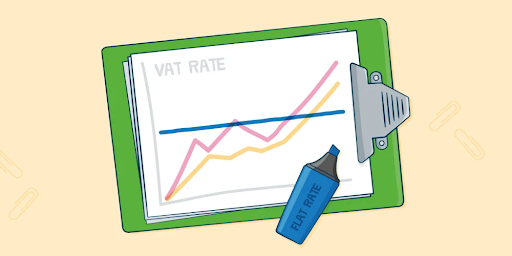Business
VAT flat rate scheme – is it worthwhile?

VAT simplifies the process and can be time-saving. You don’t need to calculate the amount of VAT you have to pay to HMRC. Instead, you just pay a percentage of your turnover that includes VAT. The percentage is determined by the nature of your company.
Who can join?
You must be VAT registered and your VAT taxable revenue should not exceed £150,000. The total amount of all your sales that are not VAT-exempt, excluding VAT. If you left the vat flat rate scheme within the past 12 months, you cannot join it again.
If you have already joined the scheme and your turnover for the past 12 months has been more than £230,000, including VAT, or if you anticipate that your turnover will be over £230,000 in the next 30 calendar days (including VAT), you must leave the scheme.
Calculating your VAT
The percentage flat rate depends on your business. On the Gov.uk site, you can find out what percentages apply to which business sectors. The percentages are lower than the VAT rate charged and allow input VAT to be recovered.
For the first year, you will receive a 1% discount on your vat flat rate percentage.
The amount of VAT you need to pay HMRC each quarter is the percentage fixed rate applied to your turnover, including VAT.
You can also see our Example of a Good Way to Start
Molly is a businesswoman in the beauty industry. Her annual turnover is £90,000. Her VAT-inclusive turnover in a specific VAT quarter is £32400. Her sector, hairdressing and beauty treatments, has a flat rate of 13%. She must therefore pay HMRC a VAT of £4,212 per quarter. She doesn’t need to keep track of her input VAT, or calculate the difference between the VAT charged and the VAT suffered during the quarter.
Low cost businesses
Businesses that don’t buy many products are referred to as limited-cost businesses. Businesses that buy less than 2% of their turnover or £1,000 per year are considered limited cost businesses.
Businesses with limited costs must calculate the VAT they pay to HMRC using a higher 16.5% rate, regardless of their sector.
Does the scheme make sense?
This scheme can save you time, but it may cost you if your actual payment is lower than what was calculated using a fixed percentage. It is important to do the maths.
This leaves little room for input VAT recovery, as HMRC must receive 99% of the 20% VAT. It may cause problems for businesses that spend little on goods, but pay VAT on items like fuel and promotional products. To determine if the scheme is worth it, you must do the maths.
Need help with tax planning?
It can be difficult to know when you should repay a director’s loan and what the tax implications are for the company as well as yourself. The Experienced Account Ease team can help you make the most of your tax efficiency.
-
Blog1 year ago
MyCSULB: Login to CSULB Student and Employee Portal – MyCSULB 2023
-
Android App3 years ago
Cqatest App What is It
-
Android1 year ago
What Is content://com.android.browser.home/ All About in 2023? Set Up content com android browser home
-
Software2 years ago
A Guide For Better Cybersecurity & Data Protection For Your Devices
-
Latest News2 years ago
Soap2day Similar Sites And Alternatives To Watch Free Movies
-
Android2 years ago
What is OMACP And How To Remove It? Easy Guide OMACP 2022
-
Android3 years ago
What is org.codeaurora.snapcam?
-
Business2 years ago
Know Your Business (KYB) Process – Critical Component For Partnerships





















